HOME > Basketball
HG08 Celtics vs. Knicks: Boston wins 5 wins in Game 3
4:07pm, 15 May 2025【Basketball】
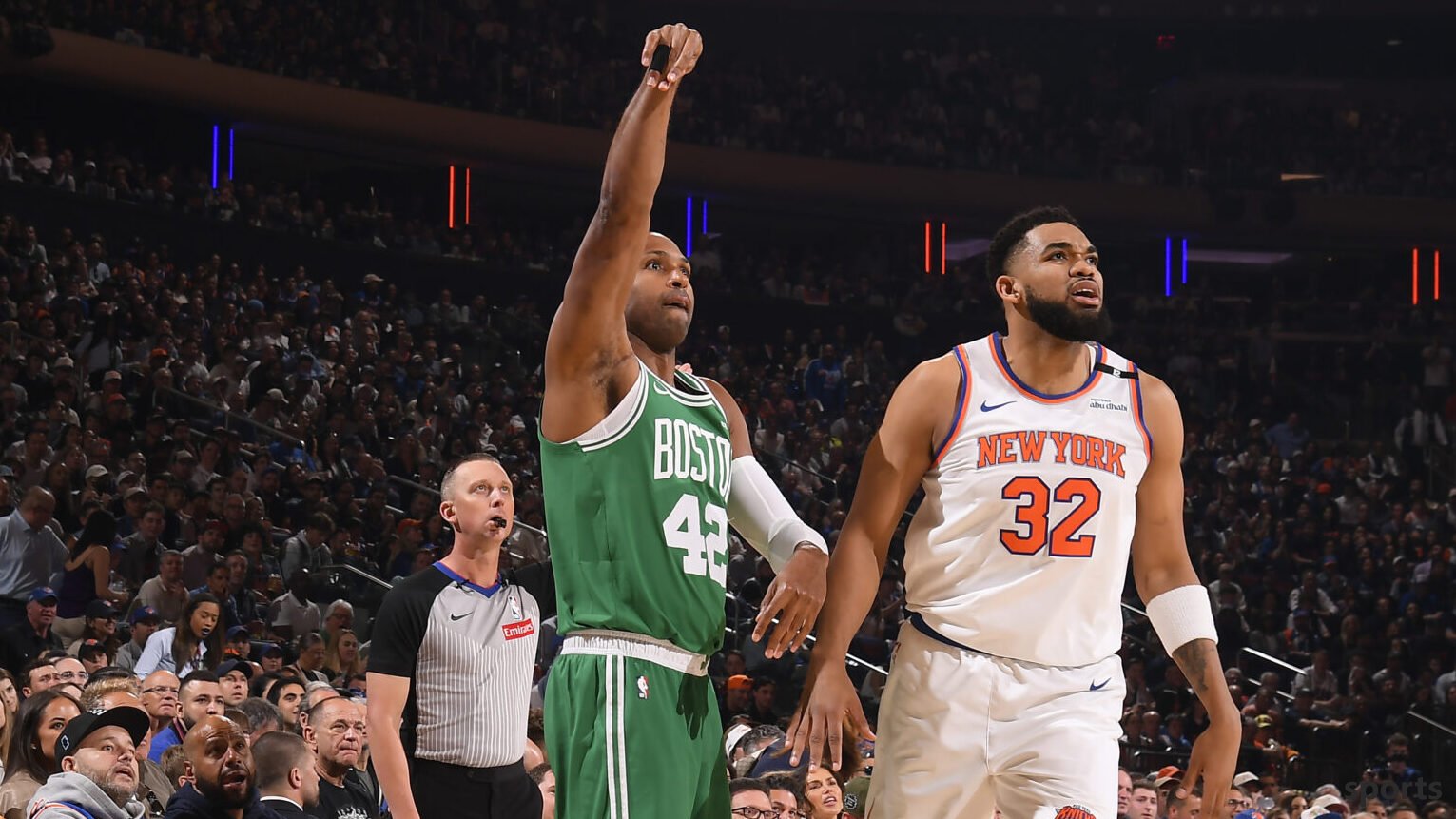
Al Horford and the Celtics shot 50% from three-pointers (20 of 40 shots).
New York – This may be hard to believe given how the playoffs are going, but when a team leads by 20 points, it usually wins.
The Boston Celtics played in Game 3 of the Eastern Conference Semi-finals against the New York Knicks on Saturday, both sides did not perform a shocking reversal. The Celtics had a huge lead in three straight games, and this time, they didn't give up and ended up winning easily 115-93, narrowing the Knicks' series lead to 2-1.
The defending champions show that they do most of the time when facing this strong opponent. They took advantage of the weaker opponents' defense, created open shots and (eventually) shot the opponent. Five of the Celtics scored at least 15 points, led by NBA Sixth Man of the Year Payton Pritchard, who came on as the substitute and scored 23 points.
The following are some notes, citations, numbers and videos from Boston’s five-game winning streak at Madison Square Garden and the away team’s record improved to 6-0 in two Eastern Conference semifinal series.
1. Celtics' three-point shooting percentage
After two hard games, the Celtics began to attack early in the third game.
In Games 1 and 2, the Celtics' offense, while better than the Knicks, scored less than one point per offense, and after halftime, Boston led by 20 points twice, but the offense seemed particularly weak.
In Game 3, the Celtics looked more like the second-ranked team in the regular season offense, scoring 115 points with just 89 possessions, which was their most effective performance in the playoffs.
Their turnover rate is lower than in the first or second game, but the efficiency gain is largely due to the Celtics’ open shots.
According to Second Spectrum's tracking data, the Celtics made 12 of 48 open three-pointers (25% shooting) in the first two games, while Saturday's open three-pointers hit 12 of 19 (63% shooting). Pritchard's open three-point shooting in Game 3 (5 of 8 shots) was comparable to the team's total three days ago.
When asked why his team was able to stop the Knicks from making a comeback on Saturday, Celtics coach Joe Mazura pointed out all the issues, except shooting.
"Don't make live ball mistakes," he said. "Prefer to basketball and rebounds, don't put the ball on the free throw line."
But the team that had the advantage of possession (gaining more shooting and free throw opportunities) lost 0-3 in this series. The Celtics had only 12 turnovers in Game 3, while the Knicks had only 11. The New York Knicks also won the rebounding battle for the first time.
The clichéd "success or failure alliance" may sound too simple, but sometimes...it is indeed a success or failure alliance.
2. The Celtics' interior defense is excellent
on the other end of the court, which is a showdown between a top five offense and a top five defense in the league. So far, the league's top five defensive teams have won, with the Celtics limiting the Knicks' score per 101.4 points in the last three games. This is 15.9 points less than the Knicks' regular season score per 100 rounds and 8.4 points less than the first round.
Although the three-point shooting percentage (20 of 40 shots vs. Celtics made 5 of 20 shots) is the biggest difference in this game, the Knicks' inside scores are also unstable. They led the Celtics 48-34 in the inside score, but these 48 points were obtained through 48 shots.
The inside hit rate is only 50% but not a good thing. This season, the league's inside shooting percentage averaged 57.1%, and the team with the bottom inside shooting percentage (Charlotte) is only 52.0%. And this is just the Knicks (the Knicks ranked eighth in the regular season shooting percentage, 58.5%), the 14th time in the inside shooting percentage is less than 50%.
Three of these 14 games (including the first game of the series) were against the Celtics, who ranked second in the regular season in the opponent’s inside shooting percentage (54.8%) and now they are 24-2 when their inside shooting percentage reaches or is below 50%.
Saturday's inside defense included some great blocks. In Game 3, five different players contributed eight blocks.
According to Synergy's tracking data, the Knicks scored a total of 39 points in Game 1 and 2, but only scored eight points in Game 3. The Celtics' first block was Luke Cornett blocking Josh Hart's conversion offense early in the second quarter:
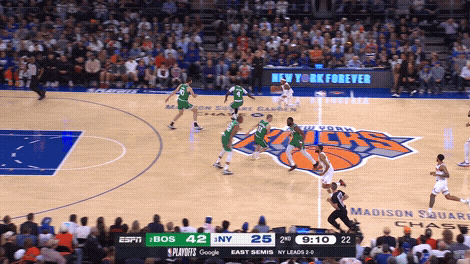
Protecting the rim is not just a patent for the big man, Derek White seemed to be defeated when he was cut through the back door by Jaylen Brunson in the late second quarter, but he also participated in the work of protecting the rim:
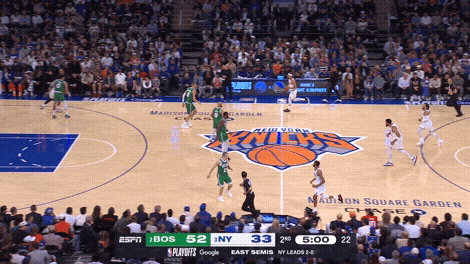
worked hard and had a good grasp of the timing. The Knicks now have a record of 5 wins and 9 losses when shooting below 50%.
3. The Knicks started slowly, lacking enough play in the starting lineup
The Knicks could not keep the Celtics down, and the open shooting opportunity to lock in Boston would be the key to Game 4.
Reversal is cool, but reversals are not expected, especially if you have already set a record of up to 20 points in a single playoff game (in 29 years of live statistics).
If the Knicks want to win this series, the start must be better. In the past two games, the Knicks lost a total of 27 points in the first quarter, and scored only 58 points in 72 attacks in the first quarter of the series (average of 0.81 points).
"We need to play more urgency," Jaylen Brunson said. "We need to perform better in the first half. We can't keep chasing a team like this."
"I just feel like we don't want to be 20 points behind in every game. It's not very good for us."
The Knicks rely heavily on their starting lineup, but this roster is not doing well. Within 68 minutes of this series, their scores were 29 points behind their opponents, and their offensive average scores were only 90.4 points per 100 rounds.
Mitchell Robinson was excellent in the bench in Game 1 and 2, but he also contributed to the offensive lapses early in Saturday’s game, and when the Celtics deliberately fouled him, he made 0-for-4 (final 4-for-12).
4. Continuous offenses exposed the instability of the Celtics
The Celtics' favorite move in this series is to cover Jason Tatum, regardless of whether the opponent is a player defending by Carl Anthony Towns. In the second quarter of Saturday, they made such covers many times, and their two consecutive offenses exposed Tatum's unstable decision-making ability.
First game, Towns broke through the screen, OG Anunobi followed Tatum, leaving Al Horford standing alone outside the three-point line. Tatum did not give up the ball, but made a mistake:
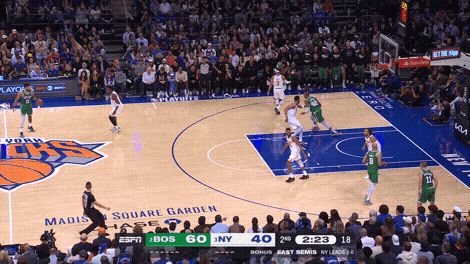
In the next round, Horford made another cover for Tatum. Towns and Anunobi caught the ball again. But this time, Tatum made the right choice, passing the ball back to Horford, who completed a big open three:
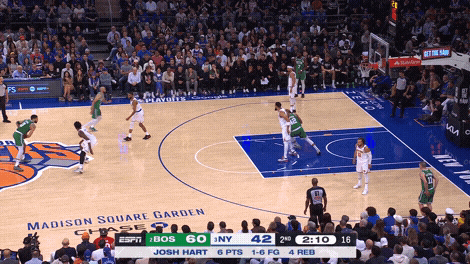
Sometimes, the right tactics don't necessarily lead to the best results. In the third quarter, Tatum made two consecutive shots faster, creating big open three-pointers, one from Derek White and the other from Horford. But both attempts missed the target.
Tatum and Jaylen Brown can make great plays, but the right play usually brings the best performance for the Celtics.
5. Early offense is good Offense
According to Synergy, the Knicks only scored 8 conversion points in Game 3, while the Celtics scored 20, the highest score in the series.
Their offense focuses on finding misalignments, and the best time to find misalignments is in the offense and defense conversion. Sometimes, Brown or Tatum attacks when Brunson gets a transition cross. Sometimes, they build an important foothold in the frontcourt.
At the end of the first quarter, Horford scored a goal from the other end of the court and blocked Miles McBride in the low post. Although the Knicks did not have double-teams, they were still beaten to the point of being frustrated.
Robinson lost Christapus Porzingis, who found space at the bottom line. When Robinson returned to defense, he could only foul the 7-foot player of the Celtics:
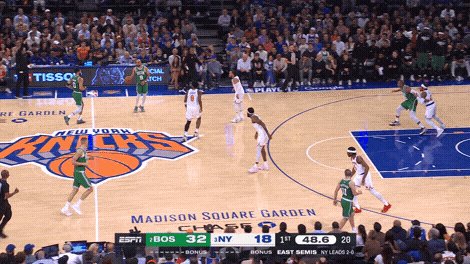
For Mazula, the early offense was not only about the matchup, but also about space.
"When you can control the rhythm by opening up space as quickly as possible," he said, "then it's easier to understand the direction of the game. We did a very deliberate job in this tonight, and we did well in the first two games, but we performed better tonight."
When the Celtics are in their best shooting form, they tend to perform better. But they still trailed 1-2 in this series and need at least one away win. Their next chance is the fourth game on Monday (7:30 EST, ESPN).
Related Posts
- Tyron Lu talks about superstar breakup: If Irving has not left the team, I think James will stay with the Cavaliers
- American News: The Lakers are expected to maintain their current lineup and enter training camp. They look forward to Vincent & Kleber s performance
- Stockton: NBA s current style is weak; they are all jumpers, players love load management; their salary is still high
- The Rockets have signed 4 players in a row, the Clippers finally take action, and the Warriors target appears
- Morant bid farewell to Bain: 5 years of brotherhood breaking, muscle shooter shoots magic to change the Eastern Conference pattern
- More than the third brother! Homgren becomes the X factor?
- Funny, Brunson was named the 2025 NBA Playoffs Best Offensive Player and Worst Defensive Player
- Why can t the Los Angeles Clippers win the NBA championship?
- Amen s "fake PG" effect is outstanding: 19+7+6 in three quarters, relaxed and enjoyable. Fan Jordan s reimbursement is good for him
- Very suddenly! Retired?! Simmons doesn t want to fight anymore?
Hot Posts
- Tyron Lu talks about superstar breakup: If Irving has not left the team, I think James will stay with the Cavaliers
- American News: The Lakers are expected to maintain their current lineup and enter training camp. They look forward to Vincent & Kleber s performance
- Stockton: NBA s current style is weak; they are all jumpers, players love load management; their salary is still high
- The Rockets have signed 4 players in a row, the Clippers finally take action, and the Warriors target appears
Recommend

Rockets Saw Antetokounmpo, 5 first rounds + two new stars as bargaining chips?

US media divides the top 20 players in history: Curry KD fourth gear, Kobe second gear, and two in the first gear!

James is in the stable and is sweating profusely on his selfie: You are fine, stick to it

Rockets keep an eye on Antetokounmpo! It is revealed that Milwaukee Stone may go to Houston, and the difficulty of the transaction becomes the key

Unexpectedly advanced 4-1, and a surprise counterattack 4-1! The dark horse is getting closer and closer to the championship, and the East Final is not very suspense

The craziest counterattack script of the NBA: Four virgins "League encircled the O Brien Cup, Thunder Seven Seconds Storm subverted the logic of the dynasty for 20 years

33 points + 36 points + 37 points! This is why the Trail Blazers gave Yang Hansen teammate a $90 million contract

Rodri broke a record for his first start after recovering from injury. Does Guardiola still have a life-saving straw?